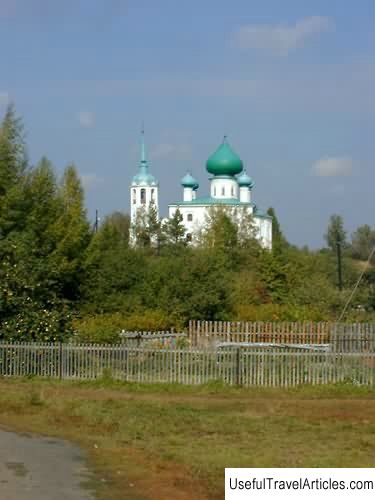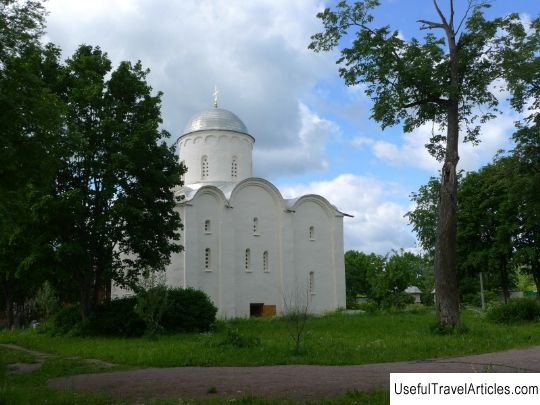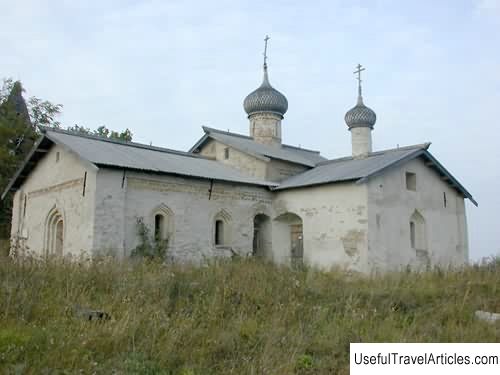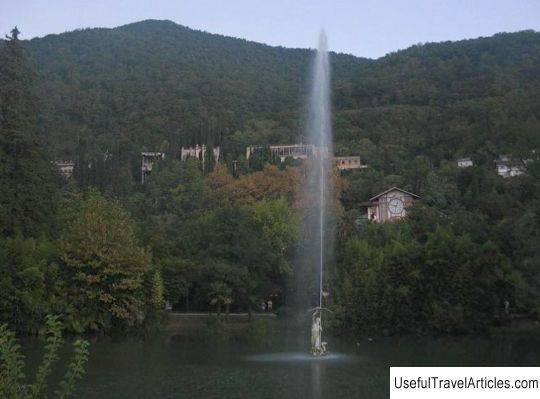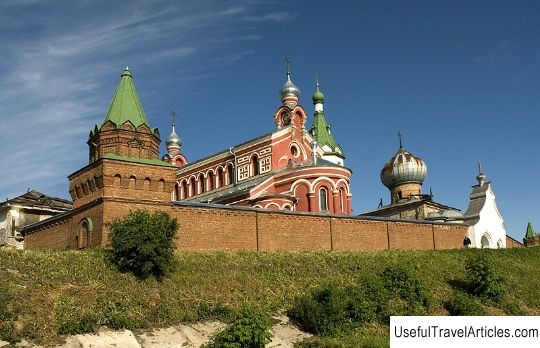Staraya Ladoga Holy Dormition Convent description and photos - Russia - Leningrad region: Staraya Ladoga
Rating: 8,2/10 (1578 votes) 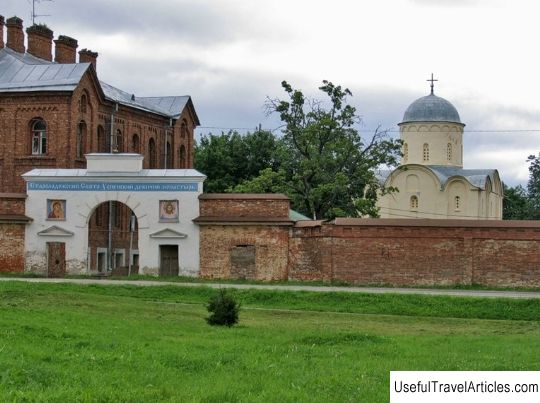
Old Ladoga Holy Dormition Monastery description and photos - Russia - Leningrad Region: Old Ladoga. Detailed information about the attraction. Description, photos and a map showing the nearest significant objects. Photo and descriptionThe Holy Assumption Monastery is located in the village of Staraya Ladoga, on the banks of the Volkhov River, north of the stone fortress. This is one of the oldest monasteries in the North-West of Russia. The monastic ensemble was mentioned already in the 15th century, and 1156 is considered to be the date of its birth. At first the monastery was male, then the monastery was transformed into a female one. On its territory, enclosed by a brick wall, you can count a dozen wooden and stone buildings. Most of the buildings that have survived to this day date from the 19th century: a brick fence with four towers and three gates, a refectory, a hospital building, a carriage shed, a cell house, a laundry room, and buildings for nuns. The hospital building and the house of the Holy Cross Church were built according to the designs of the famous architect A.M. Gornostaeva in 1861-1862. The central attraction of the Assumption Monastery is the Assumption Church. This most northern of the churches of the pre-Mongol period of Ancient Rus was built around 1156 on the land that was once in the possession of the holy Reverend Anna of Novgorod. According to one of the legends, it was at her will that the Holy Dormition Monastery was founded. The building of the cathedral is completely preserved. It is 18 meters long, 14 meters wide and over 19 meters high. The cathedral could accommodate more than a dozen visitors. The walls of the temple are painted, however, the painting is poorly preserved. The restorers found fragments of frescoes not only in the cathedral itself, but also on the territory of the monastery. Today about 13,000 fragments of murals have been discovered, which is almost 35 square meters. The Assumption Cathedral was built by Novgorod masters, who created an architectural masterpiece that united all the buildings of the Assumption Monastery around them. In the 11th year of the 17th century, the monastery was ravaged by Swedish troops. But after 6 years old woman Akilina gathered the scattered sisters and began its revival. In 1702, during a terrible fire in Ladoga, all the buildings of the monastery, with the exception of the heavily damaged Uspensky stone church, burned down. In 1718, the Dormition Monastery was destined to become a refuge for the high disgraced wife of Emperor Peter I - Queen Evdokia Fedorovna Lopukhina. After her, Evdokia Hannibal was exiled to the monastery. Later, during the reign of Emperor Nicholas I, relatives of the Decembrists came here. The donors of the convent were: the famous patron of the arts in Russia Alexei Romanovich Tomilov, whose estate adjoined the monastery on the north side, Count Dmitry Nikolaevich Sheremetev, wife of Tsar Alexander II Maria Alexandrovna and other famous people. In the period from 1779 to 1822 the abbess of the monastery was the famous schema-abbess Eupraxia, who was also the vicar of the Smolny monastery. In the years 1856-1895, the monastery was under the control of Abbess Dionysia. During her work, many stone buildings were built. In the middle of the 19th century, the famous poetess Elizaveta Shakhova (schema-nun Elizabeth) took over the monastery. Before the revolution, two miraculous icons were kept in the monastery: Great Martyr Barbara and the Assumption of the Mother of God. There was a school at the monastery. The cemetery of the monastery has not survived, the last surviving graves were destroyed during the restoration of the Assumption Church. Abbess Eupraxia was buried at its altar part, now her grave is lost. On the right side of the altar, only the tombstone on the grave of Mother Superior Dionysia (1799-1895), who served as abbess in the monastery for almost 40 years, has survived. Since 1917 the monastery was headed by Abbess Porfiry. In addition to the buildings erected in the middle of the 19th century, on its territory there were wooden and stone cell buildings, a pier, a hotel for pilgrims, the temple of St. Alexei the Man of God at the monastery cemetery, a stone building for the clergy and a chapel on Varyazhskaya Street. About 200 sisters served in the monastery. In 1922 the monastery was abolished. In 2002, the ancient monastery was returned to the Russian Orthodox Church. In 2003, a nursing community was organized. Currently, the monastery is active and continues to be restored.          We also recommend reading Iesi description and photos - Italy: Marche Topic: Staraya Ladoga Holy Dormition Convent description and photos - Russia - Leningrad region: Staraya Ladoga. |
